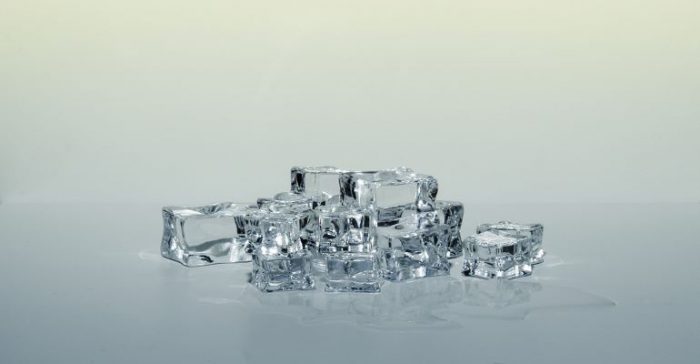This article was written by Max Ma
Refrigeration is about moving heat “uphill” from a cold place to a hot place. When the heat gets to the hot place, your refrigeration system rejects it like you reject bank fees – indignantly and as fast as possible. Heat rejection equipment comes in a variety of types. In this blog post, we’ll discuss some common equipment and offer practical tips.
Broadly speaking, heat is rejected either from a refrigerant or non-refrigerant loop. Types of equipment that reject heat from refrigerants are known as condensers, because the refrigerant vapor condenses in them as part of the vapor compression cycle. Think of water drops on your cold glass of milk. Equipment that rejects heat from non-refrigerant fluids is typically referred to as coolers; the fluids do not undergo a change of state. Think of a piece of greasy pizza slowly losing its heat on a flimsy paper plate – it remains in a sorry state while it cools. Coolers are typically air-cooled (closed loop) or set up as a cooling tower.
Now we can dive a little into condensers. The air-cooled varieties can be easily identified with their large (and often high-speed) axial fans and insulated refrigerant lines running through the fins below the fans. These are the lowest-cost condensers but most energy-intensive for the whole system. Possible energy efficiency measures include variable frequency drives (VFDs) on condenser fans, optimal fan controls, upsized condensers, and cleaning of fins and coils. All these measures allow the refrigerant to approach closer to the dry-bulb of the outside air temperature (OAT). Desperate retrofits with dubious benefit include placing lawn sprinklers on the fins, with possible effects of corroded fins, ballooning water bills, and frog ponds on the roof.
The evaporative condensers and adiabatic condensers share similar principles. In an evaporative condenser, the water is sprayed evenly on the coil, with fans concurrently blowing air over the coil. In an adiabatic condenser, air is blown across a wet media to make it wet and cool, and then the air is blown across the coil. In either case, the refrigerant can be cooled to approach the web-bulb of the outside air temperature (this temperature is lower than the dry-bulb), which makes the whole system more efficient. The evaporative and adiabatic condensers are more costly to install and maintain than their air-cooled counterparts, because they have water loops in addition to the fans and coils. Poorly managed evaporative or adiabatic condensers can suffer from freezing in the winter, causing structural damage.
Moving on, we examine coolers. The closed-loop type of coolers are just heat exchangers with hot water, oil, or glycol running through the coils. These air-cooled coolers have fans and fins to allow the fluid to approach anywhere from 10°F to 20°F of the dry-bulb of the OAT. The air-cooled types have low installation and maintenance costs, but they are energy-inefficient. The open-loop type are known as cooling towers (CTs), where the water to be cooled is pumped to the top of the CT, drops through rows of alloy media, and returns to a drain pan to be returned to the loop. Air is blown across the media in a cross-flow or counter-flow fashion. CTs are energy-efficient but can create maintenance nightmares. If you fail to keep up with the water treatment, the CT media might scale up. Fail to heat the drain pan, and the ice might block proper water return to the loop in the winter. Fail to mitigate misting/drifting, and your tenants might slip and fall from the icy walkways next to the CT.
Now we’ve got the easy stuff out of the way, you as the facility manager might still contend with nature. Seagulls delight in dropping shellfish on your condensers and coolers to break their meal packaging. Pollen is an efficient cloggant. Small animals may seek the warmth of your idle fan motor and face an electrifying death when your motor roars back to life. As long as your heat is being thrown out of your little bubble (popularly known as the thermal envelope), you should sit back, relax, and be ready for the next heat rejection problem that keeps you up at night.
